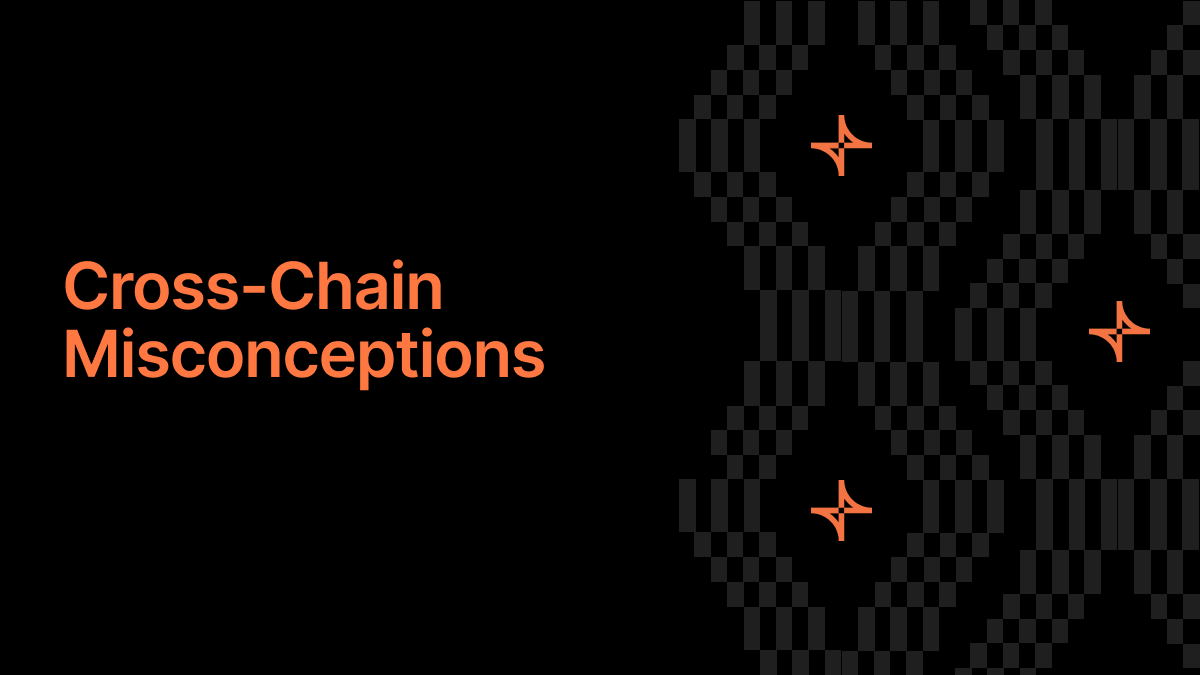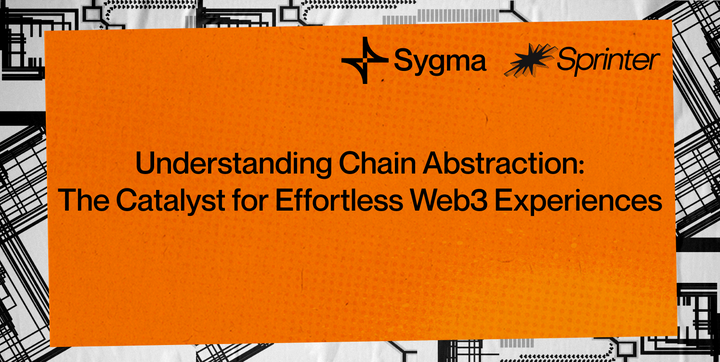Cross-Chain Technology: Eight Misconceptions


Cross-chain technology is an essential aspect of blockchain development because it addresses one of the fundamental challenges in the space: the isolation and fragmentation of various networks.
A lot of progress has been made. However, the interoperability design space is extremely complex, which makes it easy for misconceptions and half-truths to accumulate. As the adoption of cross-chain solutions continues to rise, it’s important that we’re precise in how we talk.
So, we’ve compiled a list in an attempt to clarify. Some of these points are naming convention-related (e.g., some projects refer to message passing as Arbitrary Message Bridge). The most important thing is that different concepts do not share the same name. Let’s dive in.
1: Assets are actually moving between chains
Assets are not physically moved between different blockchains. It’s all smoke and mirrors. In most cases, what you have are assets on one side of a bridge and a minted synthetic on the other side. These assets are not “native” to an ecosystem and are more of an IOU in the sense that the synthetic is backed by the locked value on the originating chain.
2: Bridging equals cross-chain message passing
Bridging is a specific type of cross-chain application built on top of cross-chain message passing, not the act of passing messages itself. It refers to minting a wrapped version of an asset on another chain. Wrapped assets are always unique to the bridge that created them (e.g., telepathy wEth != wormhole wEth). No additional liquidity is required as wrapped tokens are created as they are needed.
*Note: while “trusted event propagation” might be a better term for what’s happening, it seems that “message passing” is what has gained the most traction. The other term we see sometimes is Arbitrary Message Bridge (AMB), but this feels like the word bridge is being overloaded.
3: Cross-chain swapping equals cross-chain DEX
Swapping between chain-native assets is a cross-chain DEX. Another type of application that can be built on cross-chain message passing. These assets may have the same value (USDT on Eth=USDT on Gnosis) or different values (Eth->DOTs). Either way, they are different assets. Just like a regular DEX, this requires liquidity. So you always need some kind of DEX to swap between, even if it is a degenerate one that only lets you swap 1:1.
4: Rollup tech defines cross-chain message passing
It’s a misconception that rollup technologies (e.g., Optimistic Rollups, ZK Rollups, etc.) define how messages are passed to Layer 1. L1-to-L2 bridges are separate components on top of rollup, but there can be canonical bridges between parent L1 and L2s or L2s belonging to the same parent L1 - they route through L1, which gives ultimate security. Yet, bridges between L2s and non-parent L1 are effectively the same as between two separate L1s. p.s. A rollup is not necessarily L2.
5: Multi-bridge-aggregation is the endgame
Multi-Message Aggregation (MMA) is an additive security module for cross-chain communication. It utilizes multiple AMBs to send messages from one EVM chain to another. The main benefit of aggregation is the standardization on the interface level, and while it’s a necessary step forward, it’s not a destination.
We can imagine that bridges that verify full consensus of the source chain, primarily validity (zk) based ones, will take the niche of most security, and it might no longer make sense to have them aggregated with MPC/light-client bridges.
However, it's only after the L1 consensus protocols become more snark-friendly (e.g., Verge on Eth roadmap) that the full-consensus bridges can really become viable for regular use. So, there will be innovation both on the consensus and cross-chain levels.
6: External liquidity is the endgame
Bringing in and bridging external liquidity is important to the lifeblood of the web3 ecosystem but is not the endgame. The ultimate goal is natively composed liquidity, where we’re not just deploying a fragmented application on multiple chains and migrating the liquidity but deploying an application that spans multiple chains and natively composes that liquidity, trustlessly interacts cross-chain, enabling it to be more capital-efficient and context-aware on other chains.
7: The interoperability trilemma is an axiom
It is not. Despite the definition of “trilemma,” we would argue that with the current rate of technological advances, hitting all three corners is no longer impossible. More here.
8: Multisig < MPC < Optimistic < ZK
There's much more to the security and trustlessness of the bridge than the name of its verification method. It’s all about the nuance. Multisig can be more secure than MPC if more parties are participating. Optimistic and ZK bridges can prove different statements about the chain. Rainbow and Nomad bridges are optimistic but do fraud proofs only from one side and, for instance, are very different from Zipline. Light client vs. full consensus: circuit design, assumptions made, and proof system security are all things to consider with ZK bridges.
We hope this leads to more informed and accurate discussions around this exciting field of development. Note - this list is not intended to be comprehensive. If you think we missed any big ones, reach out, and we’ll update or address them in the future.
About Sygma
Sygma is a cross-consensus interoperability protocol, enabling general message passing, asset transfers, non-fungible tokens, and decentralized finance. Evolved from the humble beginnings of ChainBridge, it provides native interoperability between the Ethereum and Polkadot ecosystems.
Check out our documentation or GitHub to get started.




